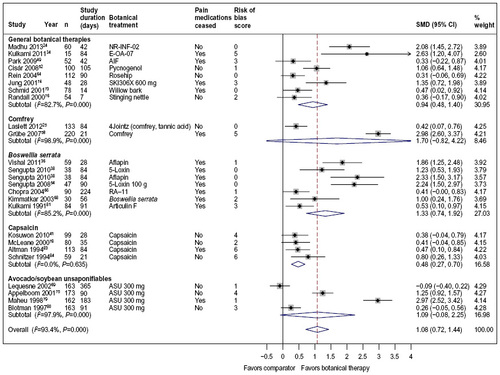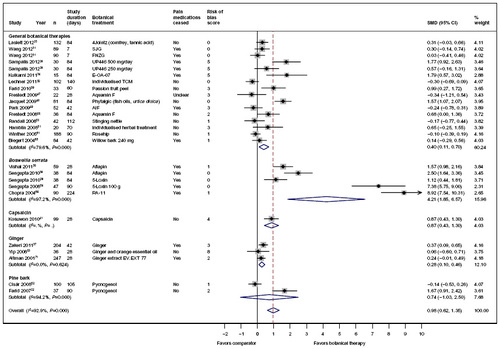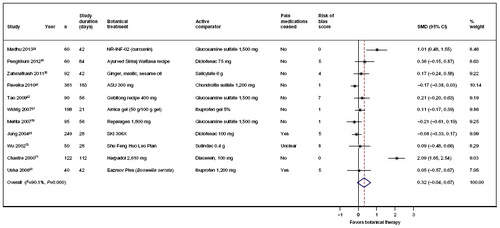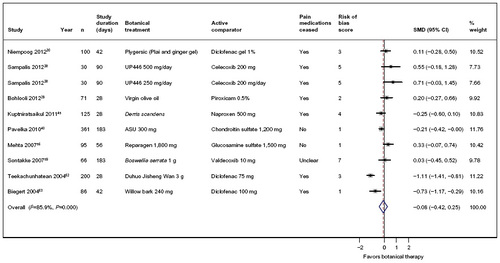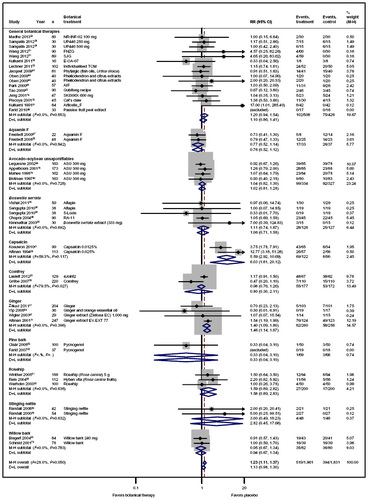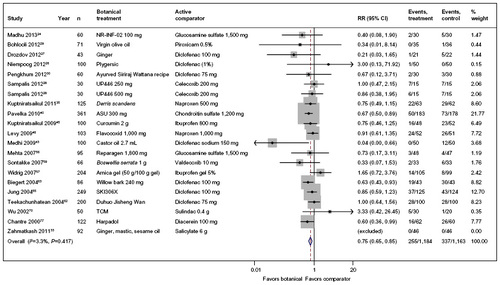Figures & data
Table 1 Details of the herbal medicinal products used for the treatment of OA in randomized controlled double-blind studies
Table 2 Risk of bias assessment for individual randomized controlled trials of botanical therapy versus placebo or active comparator
Table 3 Summary of efficacy findings of plant-based therapy compared to placebo, by therapy class
